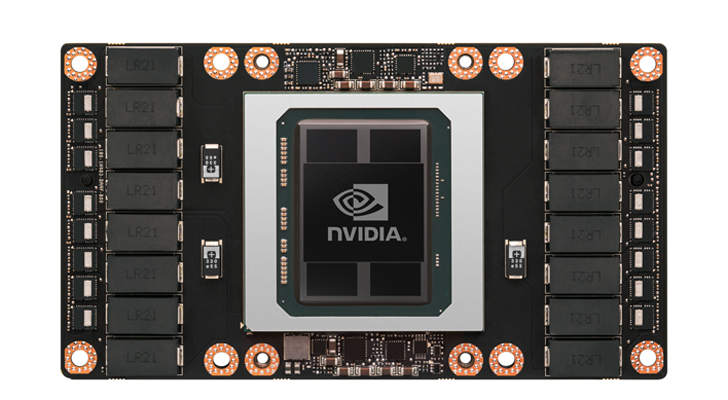I got it wrong on Nvidia (NASDAQ:NVDA), but I wasn’t alone. Even as Nvidia stock seemed headed toward $300 back in early October, the concerns weren’t about the business. Rather, they were about the valuation.
Nvidia stock seemed at worst to have a growth trajectory that would last for years, backed not only by gaming, but also by datacenter, artificial intelligence, and automotive.
With NVDA stock now at $150, valuation seems less pressing. Backing $9 per share in net cash, NVDA trades at about 18x FY20 EPS estimates; at least for now. Those estimates already are coming down, and likely will do so further as disappointing fiscal Q4 guidance is digested.
But the growth story underlying NVDA stock has taken an enormous hit, irrespective of valuation. And that might be the biggest problem facing Nvidia stock at the moment. Trust has been broken, and near-term results are unlikely to stoke confidence. NVDA is in the proverbial “penalty box” at the moment for at least three key reasons.
Trust in NVDA Stock Takes A Hit
One obvious lesson from the Q3 report is that Nvidia vastly underestimated the impact of cryptocurrency mining. That’s a problem fundamentally for several reasons.
First, it means that impressive FY19 (ending January) growth was largely inflated, notably the 61% increase in first-half gaming revenue. Secondly, it has led to a “crypto hangover,” as CEO Jen-Hsun Huang put it on the Nvidia Q3 conference call, with a massive glut of video cards crushing near-term demand.
The combination means first-half FY20 results are likely to look rather ugly, as Nvidia deals with elevated inventory and compares against crypto-inflated results from fiscal 2019.
But the surprising guidance also raises questions about a management team long regarded as one of the best in the business. Nvidia management didn’t see this coming at all.
Management had said crypto demand was affecting mostly the much smaller OEM segment not the Gaming business. And as recently as the Q2 call, Nvidia basically shrugged the whole issue off, admitting to some past help but insisting that guidance basically zeroed out crypto impact.
It’s worth calling out a notable statement from Huang on the Q3 call. The CEO said in the Q&A that “we came into Q3 with excess channel inventory post the crypto hangover.”
Huang and CFO Colette Kress, however, on the Q2 call three months basically dismissed a question about rising inventory. Kress said inventory was “generally consistent with what you have seen over the last several months.” Huang added that “inventory is well-positioned for back-to-school and the building season…”
Nvidia management simply whiffed on a big part of the business. And that colors the current insistence that the current glut will only take about 12 weeks to work through. More likely, clearing inventory is a multi-quarter process. Regaining trust could take even longer.
This Time Wasn’t Different
More broadly, Nvidia suddenly looks like every other chip stock out there. As I wrote last month, the key question surrounding NVDA was: Is this time different? Were Nvidia’s growth opportunities so great that it could avoid the traditional cyclicality that has plagued semiconductor companies since the birth of the industry?
Heading into Q3, I thought this time was different. Coming out, I’m not so sure. Nvidia is facing the same gluts that every chipmaker deals with from time to time. (Memory chipmaker Micron Technology (NASDAQ:MU) is probably the most obvious example.)
Pricing power, absent the crypto boom, looks much weaker. In fact, it looks more like the traditional decline seen in the semiconductor sector, rather than the steady ASP growth that now appears to have driven FY18 and first-half FY19 sales and margins.
Competition from
Advanced Micro Devices (NASDAQ:AMD) and Intel suddenly looks a lot more threatening, if only to margins rather than unit sales.
Traditional chip stocks generally don’t receive 30x+ EPS multiples. Over time, in fact, they generally don’t trade over 20x. Intel (NASDAQ:INTC) has rebounded of late and still trades at 10x+ forward EPS.
Qualcomm (NASDAQ:QCOM) has traded in the teens for most of this decade, even before its recent struggles. Texas Instruments (NASDAQ:TXN) historically has been a bit of an outlier on that front – but it has pulled back to 17x forward earnings as well.
In short, Nvidia’s valuation was based on it being an outlier in the chip space. It doesn’t look quite so different anymore.
What Drives a Rebound in Nvidia Stock?
From a near-term standpoint, it’s difficult to see what leads NVDA to rebound. Channel inventory issues probably suppress growth for at least the next two quarters. Q1 and Q2 comparisons are quite difficult. Datacenter revenue growth has decelerated (just 4% Q/Q in Q3) which undercuts one of the larger near-term growth drivers beyond Gaming.
Even with a sub-4% bounce on Tuesday, it’s far from guaranteed the bottom is in from a near-term standpoint. Longer-term, there’s still a lot of risk as well, even with Nvidia stock down nearly 50% from its highs.
Plus, ~18x earnings isn’t cheap if growth is stalling out and cyclical pressures are going to rise. Competition is coming. And management doesn’t look as on the ball as they should be.
The sell-off in NVDA stock isn’t being caused just by weakness in semiconductor stocks, or by the broader pressure on high-flying tech plays. The Q3 report showed real problems, and real concerns. It’s going to take Nvidia more than a quarter or two to resolve those concerns – and likely at least that long for Nvidia stock to bounce back.
As of this writing, Vince Martin has no positions in any securities mentioned.

